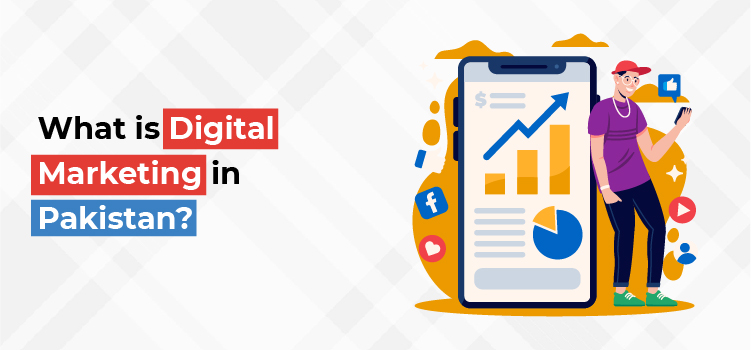One of the most important marketing strategies is logo and branding design, which involves developing the name, logo, visual identity, and other symbolic components of the brand to set it apart from other brands on the market and to support the differentiation of its products. It is one of the earliest and most essential branding activities, and it has a significant impact on the firm’s entire branding strategy since it offers the organization a competitive advantage in the marketplace.
Because it makes you stand out from the sea of competitors, branding design is crucial. Brands with distinctive identities are much easier to remember and identify than generic ones.
The more people encounter your branding, the more likely it is that they will retain you and use your services again.
Spending time and money to create a strong identity is definitely worth it since a recognized brand often significantly boosts earnings.
Importance of Logo in Branding Design?
It is estimated that 75% of consumers recognize brands by their logos. Therefore, logos are one of the most crucial elements of branding design.
A professionally created logo encourages consumers to remain around by establishing trust and authenticating your professionalism.
Your company branding design explains who you are, what you do, and how it can benefit your prospective clients. It conveys to those who are unfamiliar with your company or products that you perform an excellent job.
Having an amateurish logo will make people doubt your ability to deliver your goods and services effectively. Do you ever select one business over another simply because they seem more trustworthy? People make rash decisions, and bad design drives people away.
To stand out to customers, make sure they understand your company and foster favorable connections with you, create a powerful logo. People’s memories and emotions are deeply symbolically related to logos. Therefore, logo and branding design is critical for your business’s success.
What Is Branding? – 13 Important Elements of Branding Design
Brands are businesses just like any other, and they often rely on design to attract customers and even differentiate themselves from competitors. In many cases, branding design is all about implementing different styles and aesthetics to create a unique and compelling product, experience, or message that is memorable and memorable.
A brand’s visual identity is developed via the process of branding design, which involves developing a cohesive system of design components such as logos, colors, typography, illustrations, and photographs, and brand voice.
The aesthetic representation of a brand’s positioning and personality is found in its visual identity. Therefore, research and strategy both inform and direct the most successful brand design.
The findings of research and strategy are brought to life through touchpoints like websites, marketing materials, packaging, presentations, etc. when branding design is properly implemented.
However, you must first describe the design components that will be used in each of these touchpoints before you can construct any of them. Here are 13 most important ones.
-
Color schemes
Colors play a crucial role in brand design. Each hue has a unique effect on a brand’s audience’s psychology. To make the most of colors in branding design, it’s important to comprehend their influence.
-
Typefaces
Fonts and typefaces are distinctive design elements since each represents its own design system.
Typefaces provide branding design a distinctive, predefined personality since they are carefully and deliberately created.
-
Illustration
It’s crucial to have a consistent illustration look while also considering how images will work with other design components.
-
Shapes
Shape is the most fundamental visual input, according to the hierarchy of cognition. But just because forms are simple doesn’t imply they lack deep instinctive significance.
Shapes are a significant core element of brand design, whether they are overtly provocative or just symbolic.
-
Iconography
Iconography uses streamlined graphical pictures to convey complicated information.
A good iconography gives designers a graphical language that is affected by the industry and medium for which it was created. It incorporates both art and science. The qualities of clarity and simplicity are crucial to good iconography.
-
Pattern and Texture
Texture in design relates to the surface quality. Like physical textures, which may be rough, smooth, glossy, fuzzy, etc., visual textures can alter how a surface looks.
A pattern, on the other hand, is the deliberate repeating of a shape or form. Due to their geometric nature, patterns are pre-designed structures that are easily mass-produced.
It’s crucial to remember that textures and patterns act as supporting elements. They should never detract from your message; rather, they should strengthen it.
-
Layout
The arrangement and positioning of the brand’s visual elements in relation to one another is the foundation of effective brand design. That is what is known as layout.
Layout offers design purpose and enhances its aesthetic appeal. It incorporates a natural structure and offers balance from page to page, making it simple to traverse visual communication.
-
Photography
Photographic pictures’ effect on brand design is influenced by both their style and presentation as well as their content.
A distinctive and effective method to include narrative into your brand design is via video.
More than any other format, video has been shown to hold viewers’ attention for a longer period of time.
-
Motion and Animation
Design that would otherwise be stagnant is dynamically brought to life through animation and motion. Both should only be used in moderation, such as in discrete feedback for micro interactions rather than to entertain or please people.
Animation may aid users in creating mental models of how a system functions and how they can interact with it when utilized subtly and purposefully.
Motion is both a benefit and a disadvantage in that it draws attention. We are easily distracted by any move, whether it is important or not.
-
Social Media Handles Nomenclature
A unique URL, or customized URL unique to your platform and your brand, should be present on each of your accounts and websites. Also, the same naming and color schemes should be implied on social media handles. The logo and branding design elements should be
Applied to social media handles.
-
Company voice
A strong brand voice is one in which the company’s fundamental themes and values are communicated in words or other written materials consistently.
-
Grammar and vocabulary
Choose if you want your brand to be associated with a certain phrase. This may also imply that you’re coming up with a fresh vocabulary that people will link with your company.
-
Use of Hashtags
Create a hashtag that is unique to your business so that, as with keywords, consumers can identify it with your brand. Identify and maintain track of all the hashtags that are pertinent to your niche or sector.
Conclusion
The use of logos, colors, fonts, and other logo and branding elements can signify professionalism, insight, and intelligence to a potential customer. No matter the size or scale of your business, logo and branding design can elevate your brand and ultimately your business.
Branding and logo design can be the driving force for success for your business. But, the key to a great logo and branding design is the time-frame you provide for it. Poorly done designs may hurt a company’s reputation, so be careful and conduct your research.




